How Marvel’s Ultimate Origin Story Changed Comics For Good
Ms. Marvel’s origin story is a commentary on how female superheroes have existed in comics for decades as figures of fantasy.
You Are Reading :How Marvel’s Ultimate Origin Story Changed Comics For Good
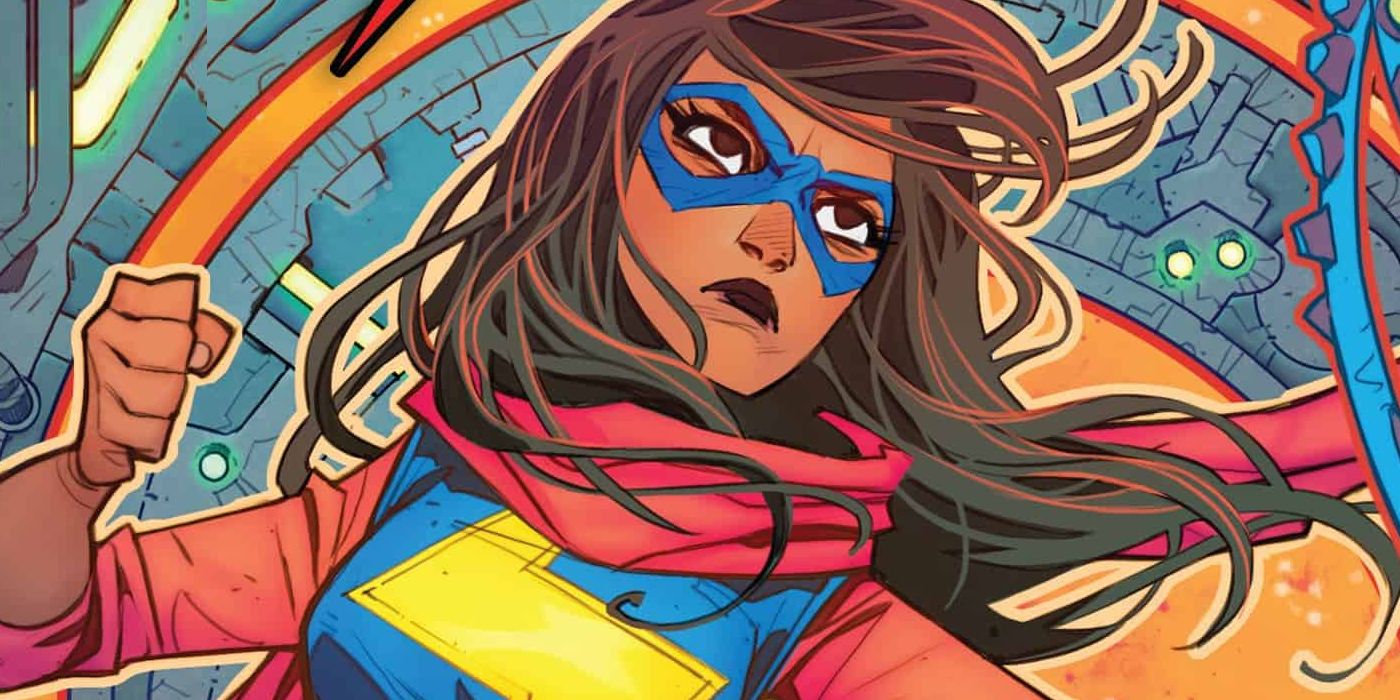
The debut of Ms. Marvel (Kamala Khan) in Marvel Comics changed the trajectory of origin stories in superhero comics forever. Kamala picked up the mantle of Ms. Marvel from her hero, Carol Danvers, and possesses the ability to shapeshift. With her original solo series written by G. Willow Wilson, Ms. Marvel re-envisioned the superhero origin story through remixing familiar themes with previously unseen discourse on growing up as a Muslim, Pakistani American teenage girl in Jersey City. Additionally, Kamala’s story broke down the barriers separating superheroes from the public they are charged with protecting, showing what might happen if a fan of the Avengers suddenly gained superpowers.
Created by Wilson, Sana Amanat, Stephen Wacker, Adrian Alphona, and Jamie McKelvie, Ms. Marvel continues to be an important figure within the Marvel Universe, it is worth looking at her origin story in order to see how it builds off of the existing canon. Origin stories are an important pillar of superhero comics, providing a central event or experience that forms the basis of a character’s identity. Superheroes often teeter the line between ordinary people and untouchable titans of morality, and origin stories often help dictate the transformation of a regular person into a stalwart of justice. After all, who would Peter Parker be if he had never been bitten by a radioactive spider? Well, ask Spider-Gwen.
With this in mind, Ms. Marvel’s debut is a marked turn in origin stories because it narrates both Kamala’s discovery of her powers as well as her rejection of existing modes of heroism. That is, with her shapeshifting ability, Kamala was able to literally become her favorite hero, Carol Danvers, before realizing how uncomfortable she was in her body. This is not only a self-aware look at how female superheroes have been depicted in comics for decades but is also a new way of approaching the genre through the eyes of a fan. Coupled with the fact that Kamala is Marvel’s first Muslim superhero of Pakistani descent to headline her own series, Ms. Marvel provided the opportunity for the origin story to be imbued with an awareness of who gets to be a superhero, and why.
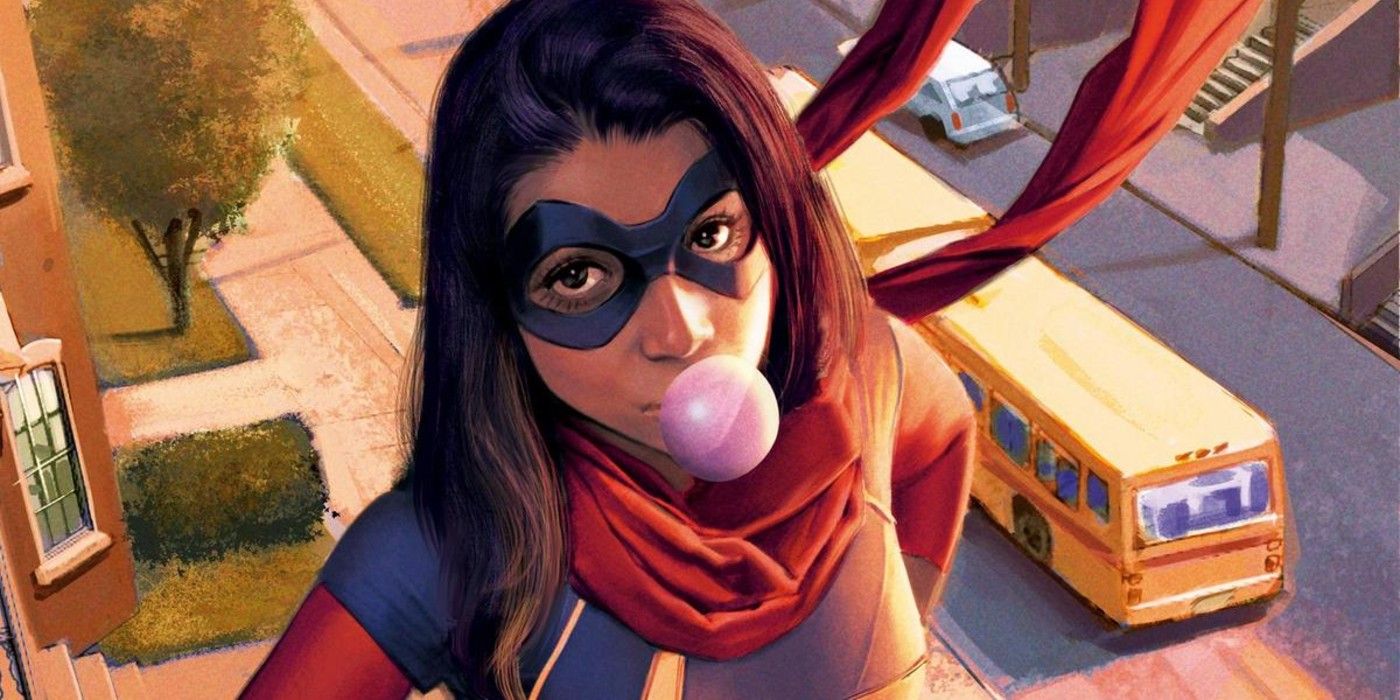
As such, Kamala Khan’s Ms. Marvel debut is Marvel Comics’ ultimate origin story because it blends hallmarks of the form with a self-awareness of the superhero genre as a whole. It builds off of seminal origins like Spider-Man’s while also providing a realistic take on the experience of looking like a superhero, seen in her initial transformation into Carol Danvers. As such, Kamala’s origin is not just a story about how a teenage girl developed superpowers, but a fan’s discovery of the limitations of who superheroes are expected to be, and what they are expected to look like. This laid the groundwork for Ms. Marvel’s impact as a character, providing not only an underrepresented voice in comics but also a dramatic overhaul of the status quo of superheroes in general.
Ms. Marvel’s Origin Story Comes From Other Superheroes
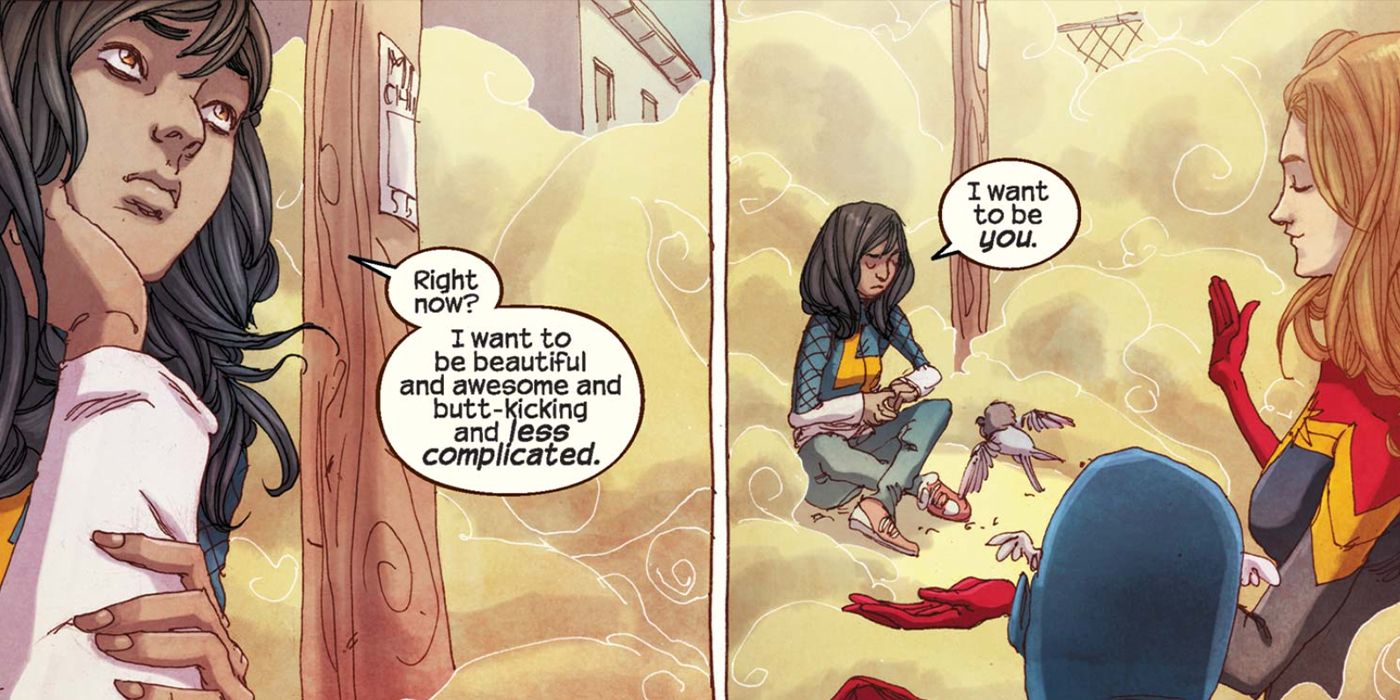
Ms. Marvel’s origin story is unique because of the role that societal expectations of superheroes play in the discovery of her powers. She does not get her powers in an isolated, freak experiment gone wrong, or even a terrible accident, unlike lots of Marvel’s heroes. Kamala gained her powers from the Terrigen Mist, where she also had a vision of Captain Marvel, Iron Man, and Captain America appearing to her while speaking Urdu in Ms. Marvel #1 (written by G. Willow Wilson, art by Adrian Alphona, colors by Ian Herring, and letters by VC’s Joe Caramagna). In the span of her transformation in the Terrigen Mist, Kamala went from being a huge fan of Captain Marvel to literally being in her shoes, thanks to her newfound shapeshifting powers.
When talking to Captain Marvel, Iron Man, and Captain America about the struggles she experiences as the American daughter of Pakistani immigrants, Kamala reveals that she wants to be Captain Marvel because she is “beautiful and awesome and butt-kicking and less complicated.” It is this admission that determines the nature of Kamala’s powers as a shapeshifter from the Terrigen Mist, as her wish to be Carol Danvers is granted at the end of the issue. This is part of the reason why Ms. Marvel’s origin differs so dramatically from most of the Marvel canon: her powers are directly inspired by her admiration for other superheroes. Within the Marvel Universe, this breaks down the separation between heroes and the everyday people they protect.
Ms. Marvel Discovers The Uncomfortable Realities Of Being A Superhero
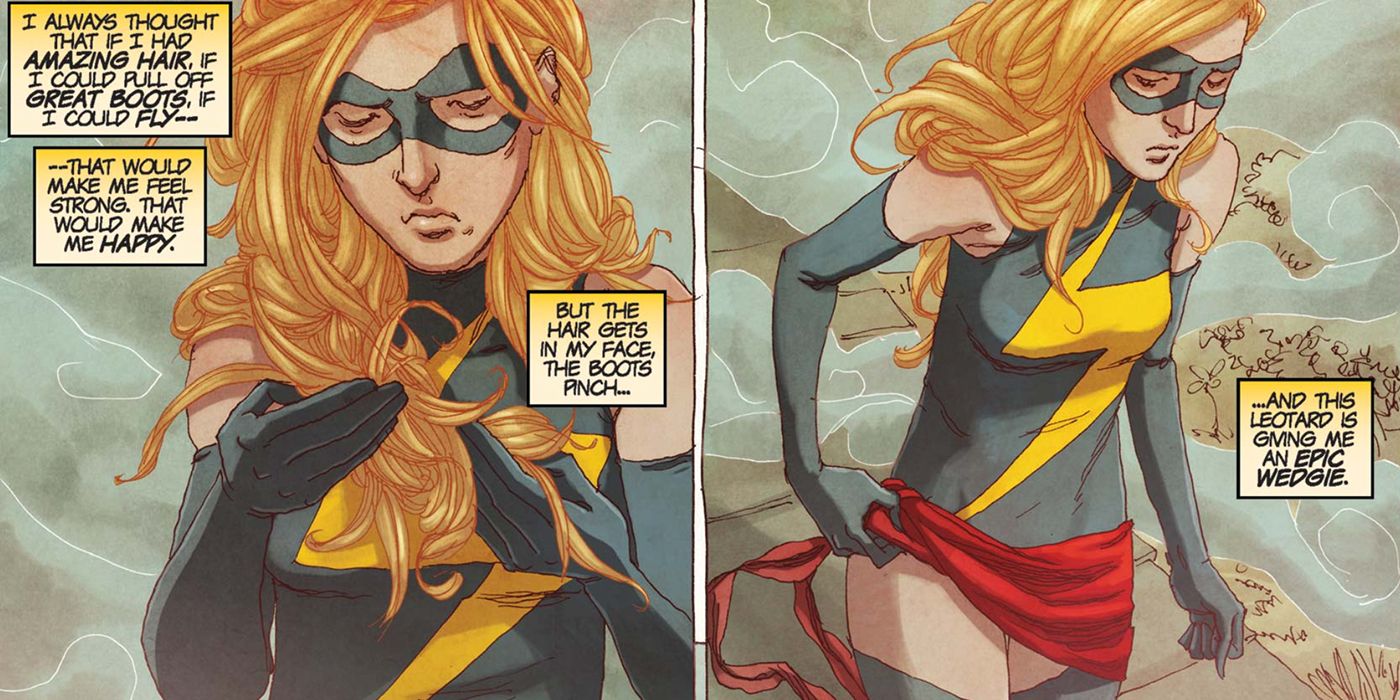
But on a more serious level, Kamala first changing into Carol reflects the expectations that she has about who gets to be celebrated for having superpowers. In Carol Danvers’s form as a white woman, Kamala embodies a much more palatable vision of a superhero, and part of her origin story involves her having to unlearn these expectations. While it may be easier for Kamala to be accepted by society in Carol’s body, it is ultimately impossible for her to truly represent herself and her values if she is pretending to be someone else.
Kamala’s discovery of her discomfort with looking like Carol in Ms. Marvel #2 shows the converse side of superhero admiration (written by G. Willow Wilson, art by Adrian Alphona, colors by Ian Herring, and letters by VC’s Joe Caramagna). While she thought looking like Captain Marvel would help quell her feelings of alienation from her peers, it actually made her problems worse. Many of the aspects that she admired about Captain Marvel proved to be uncomfortable in real life, despite how effortlessly Carol pulls them off.
This realization that Kamala has while in Carol’s body is important in also recognizing the history of how female superheroes have been portrayed in comics. Carol’s skimpy costume and perfect hair aren’t actually all that great in practice, showing the flip side of the fantasy that many female heroes have been imbued with for decades. Kamala’s subsequent rejection of Carol’s look not only led to her own self-acceptance as a South Asian American hero, but also opened up more ways for female characters to present themselves in comics.
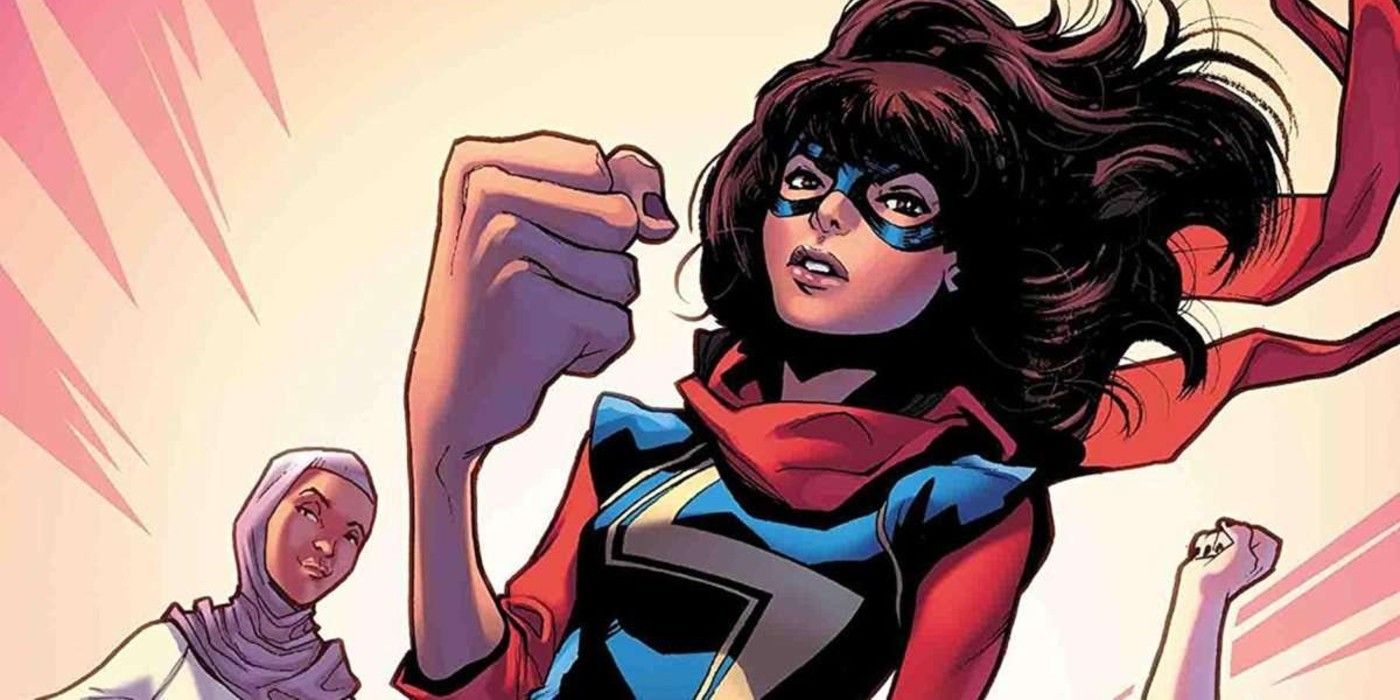
Kamala Khan’s origin in Ms. Marvel reimagined what origin stories could be in superhero comics. Instead of scientists chasing cures for rare diseases, or scrawny soldiers vying to fight for what they believe in, Kamala Khan was a teenager who simply wanted to fit in, whether it was amongst her classmates at school or other superheroes on the battlefield. This desire is a universal one, and is one of the reasons why Kamala is such a relatable character.
Ms. Marvel’s story captures the very best of Marvel’s origin stories, from both her relatability as a Captain Marvel fan to her search for her most authentic self as a young adult. It encapsulates both the changing landscape of superhero fiction as well as the proliferation of fan culture in today’s times, making Ms. Marvel a product of decades of origin stories just as much as she is a contributor to the Marvel mythos. Regardless of where Kamala Khan’s character will go in the future, the story of her becoming Ms. Marvel will always be relevant to anyone who has ever searched for their own identity.
Link Source : https://screenrant.com/ms-marvel-kamala-khan-ultimate-origin-story/
